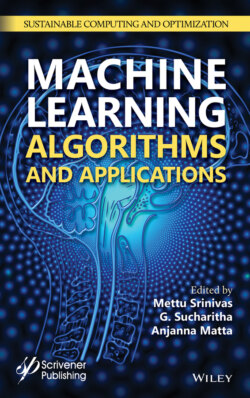Читать книгу Machine Learning Algorithms and Applications - Группа авторов - Страница 37
2.5 Results
ОглавлениеThe trained CNN models were tested with new silkworm egg sheets that were scanned using a Canon® paper scanner at 600 dpi, to classify and count the number of eggs. These digital datasets were completely isolated from the training step; thereby, the trained CNN models had to predict the results than providing learned results. Table 2.4 represents the performance of the overall CNN model trained using our datasets. The performance of a few datasets is shown due to space restriction. It can be observed that CNN models trained with two hidden layers perform superior to the conventional techniques by providing accuracy of over 97%. The accuracy shown in Table 2.4 is the accuracy of the number of eggs counted and accuracy in classifying the eggs. The model consistently outperforms the conventional computer vision/image processing technique of silkworm counting and classification with accuracy over 97% for newer data of the same breed. The inference time shown in Table 2.4 was performed on an Nvidia GPU (GTX 1060).
The model performance drops to newer egg data that are completely different in color and texture, which were not available in the training dataset. This happens due to the nature of different breed eggs that are spatially different from the trained model. Collecting and training a deep learning model to a different breed of silkworm eggs will resolve these issues, which is under action.
Table 2.4 Performance of the CNN model results on test datasets.
| Test sample | True count | Count prediction | Time (sec) | Class scores | Accuracy (%) | |
| HC | UHC | |||||
| MSR1_001.jpg | 588 | 586 | 11.83 | 437 | 149 | 99.65 |
| MSR1_002.jpg | 534 | 526 | 8.99 | 473 | 53 | 98.68 |
| MSR1_003.jpg | 554 | 556 | 10.42 | 491 | 65 | 99.28 |
| MSR1_004.jpg | 539 | 528 | 9.81 | 501 | 27 | 97.95 |
| MSR1_005.jpg | 597 | 588 | 11.14 | 562 | 26 | 98.32 |
